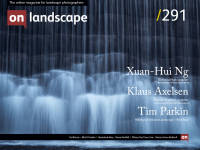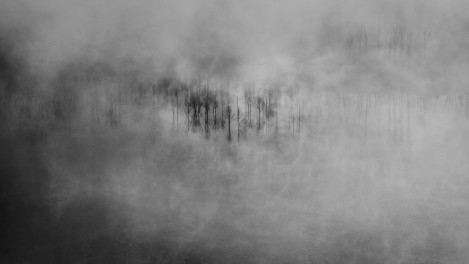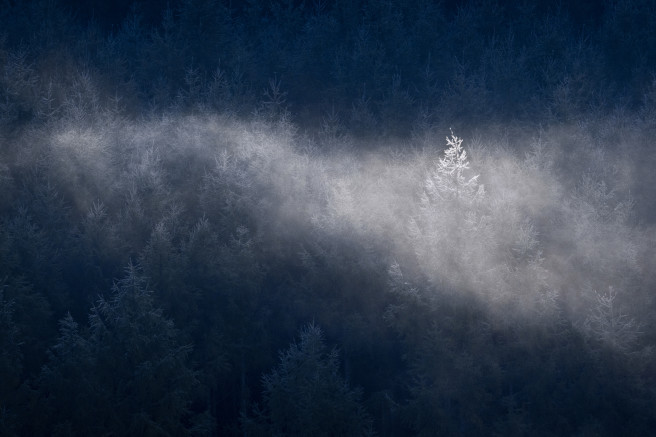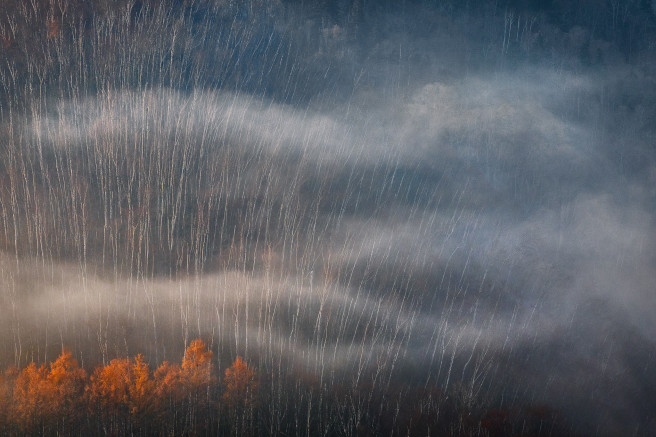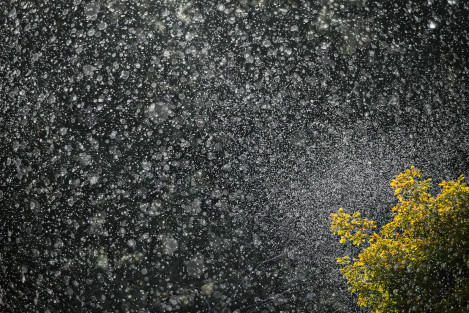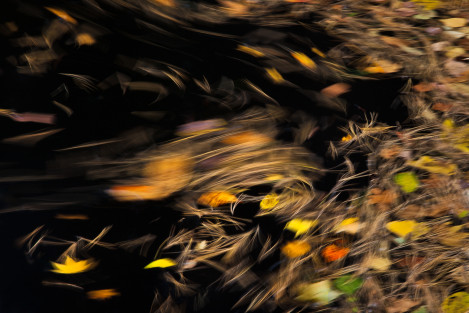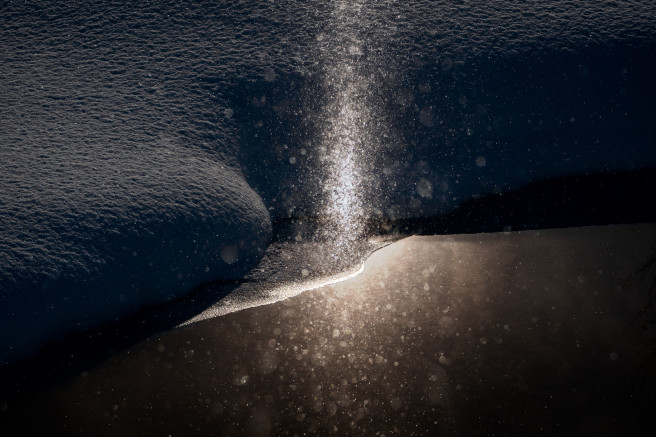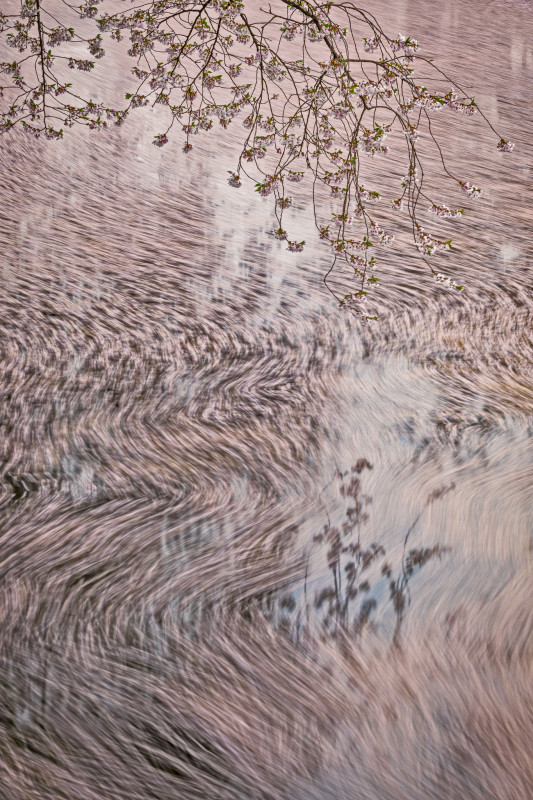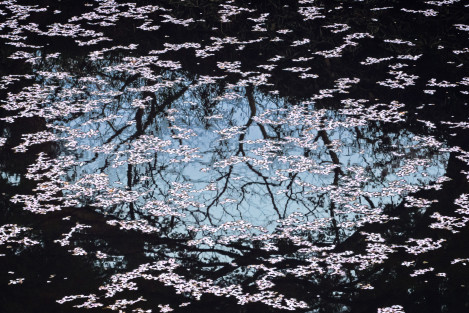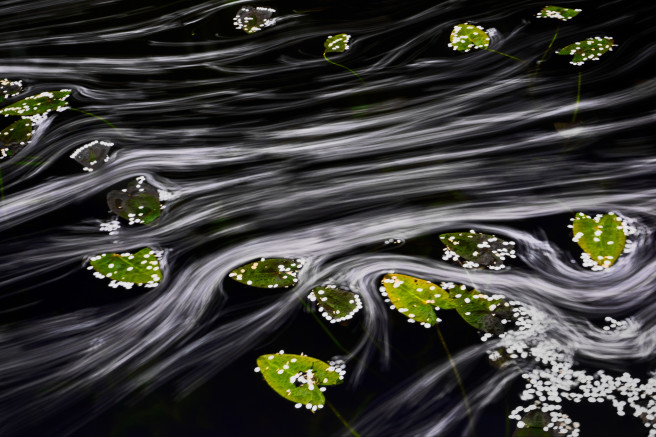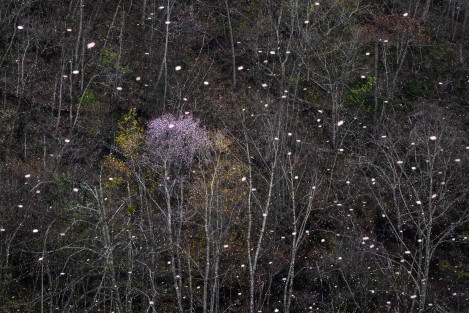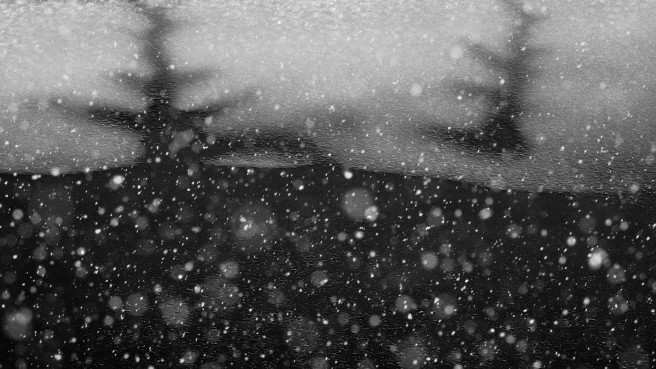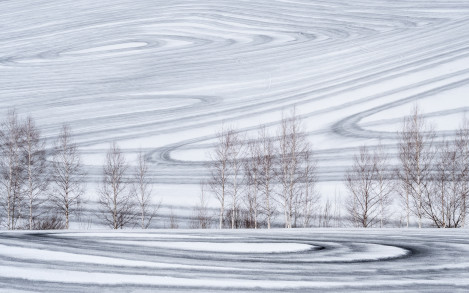Featured Photographer

Xuan-Hui Ng
Xuan-Hui Ng is from Singapore and currently lives in Japan. Her work is represented by Foto Relevance Gallery (Houston, Texas). She is an instructor for Santa Fe Workshops and will have a solo exhibition, “Transcendence: Awakening the Soul”, at the Griffin Museum of Photography (Winchester, Massachusetts) in December 2023.

Michéla Griffith
In 2012 I paused by my local river and everything changed. I’ve moved away from what many expect photographs to be: my images deconstruct the literal and reimagine the subjective, reflecting the curiosity that water has inspired in my practice. Water has been my conduit: it has sharpened my vision, given me permission to experiment and continues to introduce me to new ways of seeing.
Xuan-Hui Ng began photographing as a form of self-therapy while she was grieving the loss of her mother. Spending time in nature gave her a sense of perspective and reignited a sense of wonder, reminding her that there is much to live for. Her interest in photography grew out of a desire to prolong the tranquillity that she experienced, and she describes her images as a collaborative effort with nature.
We touch on what Xuan has gained from mentoring, pacing and learning to live with serendipity, as well as the circle that has brought her back to workshops as an instructor. Xuan has previously said that she finds it difficult to write about her photography, yet you’ll find that she talks about it eloquently.
Would you like to start by telling readers a little about yourself – where you grew up, what early interests you had, and what you went on to do?
I was born and raised in Singapore. I learnt ballet and piano as a child and later competed in sailing (in the “Optimist” and “420” categories). I’m a TV addict and watched lots of Cantonese TV series with my mother as a child. In college, I fell in love with comedies like “Dracula, Dead and Loving it”, “Space Balls” and “The Young Frankenstein”.
I graduated with a Bachelor of Science degree in Economics from the Massachusetts Institute of Technology and spent a year at the International Monetary Fund as a research assistant. My mother’s death from colon cancer prompted me to return to Asia to be closer to home. One of my best buddies from college was working in Hong Kong at an investment bank and seemed to be really enjoying it. I decided to apply for a job at the same firm and spent the next 14 years in investment banking and finance related jobs.
Did you have any early exposure to photography or art?
I had no formal education in photography or any art related fields. My world until age 33 had been all about economics and finance, strategy and negotiations. The only brush with the art world was in my 1st year of college when I went shopping for a poster for my dormitory room. I fell in love with Monet’s “Impression, Sunrise” without knowing who he was.
I love mysteries, stories with twists and turns, with plotlines that are not obvious. Also, I listen to music whenever I am driving from place to place to photograph. My mind gets really busy and often distracted, but music helps me to focus.
At first, these preferences or influences permeated through my work unconsciously. By that, I mean I’m naturally drawn, for example, to scenes that resemble the backdrop of a ballet or a fairytale. But now, I pursue them a little more consciously.
Who (photographers, artists or individuals) or what has most inspired you, or driven you forward in your own development as a photographer?
Many people have helped shape my photography life, including Arthur Meyerson, Elizabeth Opalenik, Mac Holbert, Mary Virginia Swanson, and Elizabeth Krist. I met most of them through the Santa Fe Workshops.
I’ll highlight two mentors in particular here. One is Nevada Wier, who mentored me for three years through the Santa Fe Workshops’ mentorship program. She taught me the ABCs of photography and helped me discover and develop my voice in photography. The other is Masumi Takahashi, a photographer and guide from Hokkaido, Japan. He taught me about nature and how to photograph various natural phenomena more effectively.
Continuing education is important for me, especially since I was not formally trained in photography. Also, I get bored easily and am concerned that the audience will get bored by my images too. I want to keep maturing and evolving as an artist.
In recent years, I enrolled in workshops taught together by Freeman Patterson and Andre Gallant. Also, I just completed a workshop, “Poetry of Abstraction”, with Susan Burnstine.
How valuable has it been to be encouraged to pace yourself and to moderate your ambitions to show work – to evolve first and more fully before putting your photography on view? I sense that you might otherwise have wanted to run more quickly.
I need to thank Nevada for keeping me in check. You’re so insightful to say that I had wanted to run more quickly. She told me that she’d introduce me to Mary Virginia Swanson (“Swanee”), a consultant for artists when I was ready. Eagerly, and later, rather impatiently, I waited for that “green sign”.
I am very grateful that Nevada did that for me. By the time I attended portfolio reviews, my images were ready. I was ready. Although the comments were mostly positive, the less positive ones did affect me. But I was sufficiently emotionally mature to take them in my stride. I learned during the reviews that reviewers like different images. What’s valuable for me is knowing which images were more well liked and which were less. When enough people don’t like a certain image, it’s important to understand why. Sometimes we need to hear a piece of advice more than once before it sinks in. I think that reviews are a test of one’s convictions. We are at liberty to agree or disagree with the reviewers, but it’s important to listen and digest the feedback.
Also, I’ve received some invaluable advice from the reviewers, for example, from Aline Smithson, Victoria Chapman and Suzanne Revy, who suggested that I write to reflect my current motivations, beyond the initial grief, in my artist statements.
These reviews also gave me my big breaks - I met Paula Toganarelli, the former curator of the Griffin Museum of Photography at the PhotoNOLA portfolio Reviews, Elin Spring of “What will you remember?” at LACP’s Exposure Weekend and Manfred Zollner of “fotoMAGAZIN” at Fotofest. They featured my work, giving it the much-required exposure. It was also at the Fotofest online reviews that I met Geoffrey Koslov and Bryn Larsen the co-owners of Foto Relevance gallery, who signed me on as an artist. At Fotofest last year, Crista Dix, the current curator of the Griffin Museum of Photography, offered me a solo exhibition opportunity at the museum in December this year.
Would you like to choose 2 or 3 favourite photographs from your own portfolio and tell us a little about why they are special to you, or your experience of making them?
There are three images that are significant to me.
Serendipity #14
I was on the verge of giving up on photographing diamond dust when I chanced upon a small pillar of diamond dust (“sun pillar”) between two ordinary farmhouses. It reminded me to never give up and to keep looking for beauty in the mundane because ordinary moments can turn extraordinary in the blink of an eye. I have very few images where the subject is right in the middle of the image, but this was one image that I felt worked. I had variations with the pillar of light on the side, but I kept coming back to this rendition of the image.
Serendipity #6
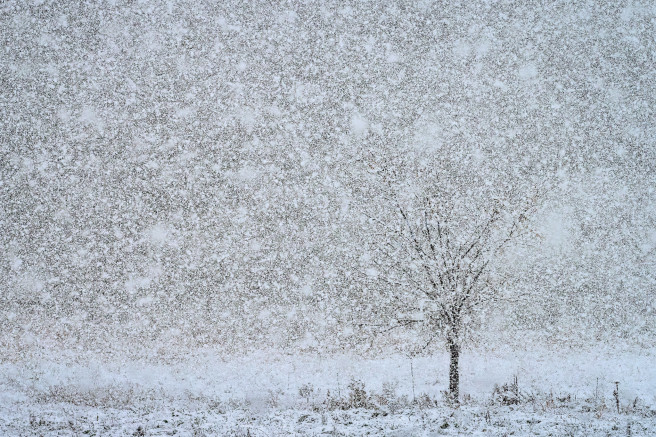
The second image was taken in a small snowstorm. It was all white, and I could barely make out the tree trunk and branches. I wasn’t sure if I liked the image initially, but it grew on me over time. This image taught me that the lack of colours can be just as powerful and encouraged me to be more adventurous in my experiments.
Remembrance #3
The third image was one of my first forays into long exposure. It was made on the first day of my first trip to the Hirosaki Castle in Aomori. Each image took 30 seconds to create, unlike most of my images, which were taken in less than a second, but I persisted in getting what I considered to be my favourite composition. My initial capture did not include the reflection of the branch. However, while inching left and right to create different variations of the image, I saw the reflection. This reminded me of the importance of not staying rooted to a spot and to exhaust all possibilities of a scene by “working the subject”.
Japan clearly had a big impact on you as a child, as you chose to make it your home and manage your career around that ambition. Tell us about the places that you are repeatedly drawn to? How easy is it for you to travel and to find enough time for your photography?
I’m repeatedly drawn to Central Hokkaido, where I first visited with my family when I was seven years old. Being there each time reminds me of the simplicity and purity of childhood. Central Hokkaido is a magical place – filled with mountains, forests, rolling fields, rivers and lakes. The distinct seasons and significant temperature differences between night and day give rise to some amazing natural phenomena, such as mist, frost and diamond dust. My desire to spend more time in Central Hokkaido led me to move to work in Japan and to eventually leave my finance job in 2013.
It’s very easy to travel in Japan, but I still have my day job, which restricts me a little. However, Covid-19 has brought my work online, so that was a silver lining for me.
Can you give readers a brief insight into your set up – from photographic equipment through processing to printing? Which parts of the workflow especially interest you, and where do you feel you can make the most difference to the end result?
I used to photograph with a Canon 5D m¥Mark IV. I now use a Panasonic Lumix G9 Pro with a Leica DG Vario-Elmarit lens. I have an Epson SureColor printer that handles up to 17 inch wide paper.
My images are single exposure images made in camera. The “layers”, the “texture”, that you see are created with what I call “nature’s toolkit” which includes snow, rain, and even insects.
I don’t do multiple exposure or composites but I follow and admire many artists who use these techniques. However, it’s just not what I do with my nature images because what gives me the thrill is looking for beauty in the mundane and also chancing upon amazing scenes.
I think the image has to be “right” at the outset. It’s not possible to save it using Photoshop. Rather, it would be a different exercise altogether. That said, without Photoshop, I cannot bring out the essence of the images because the camera simply cannot replicate the colours, the light and the emotion I felt when photographing.
What does nature and photography, offer you? Which for you now comes first – being out in nature, or chasing the next image or series of images? You’ve written about actively pursuing aspects of nature, but I wonder if it has perhaps taught you to slow down a little too.
To be honest, I am quite stressed when photographing nature because it’s constantly changing, and it’s so easy to miss capturing the moment you witnessed.
So, photographing nature hasn’t taught me to slow down, but it has taught me to “let go”. The difficulty of photographing nature is you can’t dictate whether it’ll be rain or shine, or when the insects will appear, or when the flower petals will fly. Of course, as I become more experienced in photographing nature, I also become better at predicting some of these natural phenomena. However, nature loves to throw us surprises. So, trying to predict what will happen with 100% accuracy or trying to capture every single moment is impossible. I can only do my best and leave the rest to chance.
Do you have any particular projects or ambitions for the future or themes that you would like to explore further? You have among other things begun to chase charcoal powder in ‘Winter’s Coda’?
I would like to visit the Arctic Circle and revisit Iceland. I would like to do a series on rain. I realised it’s missing from my collection while preparing for my lectures for Santa Fe Workshops.
I’ve actually chased charcoal powder for a while, but I was more diligent about it last year because I had fewer diamond dust sightings. I find that the charcoal powder scenes are harder to photograph because I find them more literal.
Is it important for you to feel that you are moving on and finding something new, even if you are still visiting the same places?
Yes, I think “moving on and finding something new” is important to me. Increasingly, I find it difficult to make images that add something “extra” or “special”, and fear that my images are becoming “more of the same”.
I think it’s good to photograph in both new and old places. Photographing in new places can be both intimidating and exhilarating due to the unknown. I realised I’m using similar techniques like “backlighting” and “reflection”, but very often, different subjects and places demand a new approach, a new way of seeing creatively. I enjoy that challenge. When I return to the “old” places, I find myself bringing the influences of the new places and subjects back with me.
How excited are you to begin to tread in the footsteps of those who have inspired and educated you, giving talks and now a workshop for Santa Fe Workshops?
I feel very blessed and fortunate, and I don’t take this opportunity for granted. It was beyond my wildest dreams when Reid Callanan, the director of the Santa Fe Workshops, wrote to invite me to teach for them. It’s both an honour and a privilege. Nevada told me that teaching has made her a better photographer. I agree with her fully because I was already experiencing the benefits, even at the preparation stage, when I was putting the lecture materials together. For example, I realised I had not been photographing in rain much, and I had not been photographing “layers” recently.
If you had to take a break from all things photographic for a week, what would you end up doing? What other hobbies or interests do you have?
I have been doing that every now and then. I love to swim, do gyrotonic and gyrokinesis, watch TV series and simply do nothing! Sleep is underrated!
And finally, is there someone whose photography you enjoy – perhaps someone that we may not have come across - and whose work you think we should feature in a future issue? They can be amateur or professional. Please include a link to their website or social media, as appropriate.
I’m a fan of Huibo Hou, Sandra Bartocha and Samuel Feron’s work.
Huibo photographs in black and white. I’m amazed at how she “sculpts” light in her images, and I love how she brings out detail in her blacks, adding more dimension and complexity to her images.
Sandra is a master at intimate landscapes and creating emotionally evoking images. She is unafraid, not bound by rules.
I’m a huge fan of Samuel’s creative interpretations of nature. His collections are so creative and cohesive. They have redefined what constitutes “a series” for me. He is also a very thoughtful photographer, and I find myself quoting what he has said in interviews during my workshop.
Thank you, Xuan.
You’ll find Xuan’s website at www.xuanhuing.com, and she’s also on Instagram. You can read Matt Payne's Portrait of a Photographer on Xuan's work.
Her solo exhibition ‘Transcendence: Awakening the Soul’ will be at the Griffin Museum of Photography, Winchester, Massachusetts from 12 December - 7 January 2024.
We’re also fans of Huibo Hou and Sandra Bartocha, and you can read our interviews and articles they have written.

